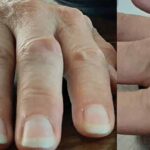“Surprisingly, cellular hypercitrullination was not reproduced by cell death and cell activating pathways previously thought to be responsible for the process. Indeed, this was very surprising, because our data did not support the current model of citrullination in RA. Some stimuli induced citrullination, but none induced the hypercitrullination seen in the disease,” added Dr. Andrade.
While the investigators have shed light on the path to hypercitrullination, they are not able to explain what directs the perforin and membrane attack complex (MAC) pathways into the RA joints. (posted 4/28/2014)
ad goes here:advert-1
ADVERTISEMENT
SCROLL TO CONTINUE
Lara C. Pullen, PhD, is a medical writer based in the Chicago area.

